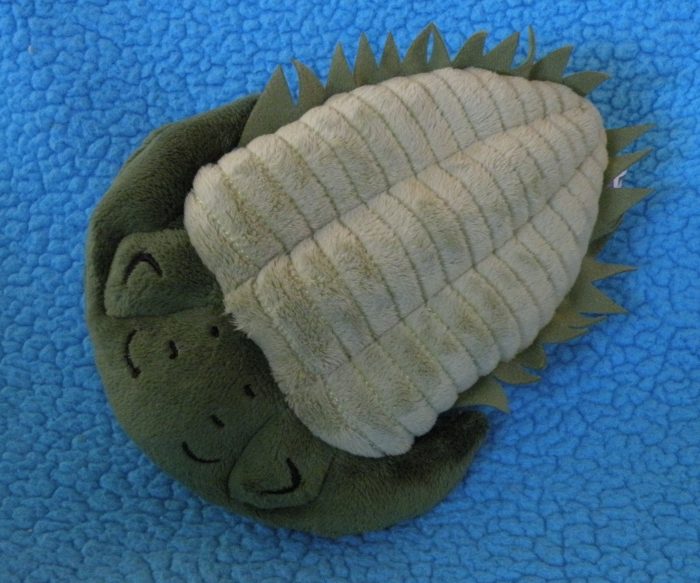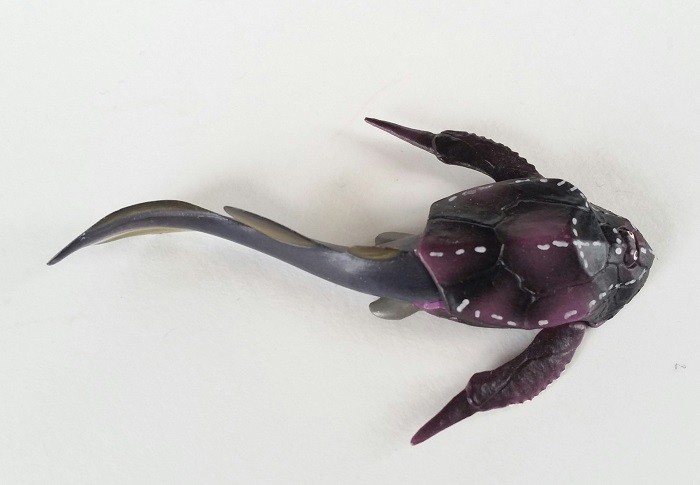Age: Devonian
Review: Encyclopedia of the Paleozoic (Kaiyodo Capsule Q Museum)

4.7 (12 votes)
Review and photos by Tim Sosa, edited by Suspsy
The interval of Earth’s history which shows fossil evidence of animals is known as the Phanerozoic Eon (literally “visible animals”). The Phanerozoic is divided into three Eras. We live in the Cenozoic, which was preceded by the Mesozoic (during which dinosaurs were the largest terrestrial animals).
The interval of Earth’s history which shows fossil evidence of animals is known as the Phanerozoic Eon (literally “visible animals”). The Phanerozoic is divided into three Eras. We live in the Cenozoic, which was preceded by the Mesozoic (during which dinosaurs were the largest terrestrial animals).
Review: Bothriolepis (Paleozoo)
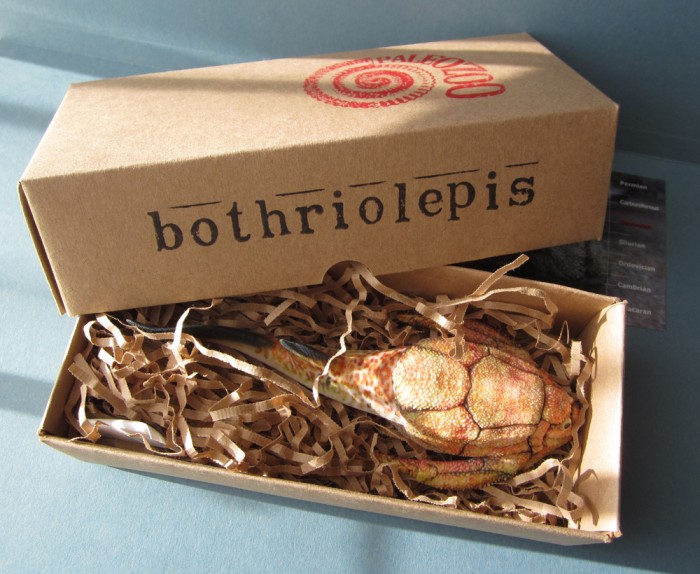
4.3 (6 votes)
The Dinosaur Toy Blog is more active than it has ever been. This year, to date, we’re averaging a review every day – January 2016 was our most prolific month ever with 30 reviews in as many days. For this I can take no credit but must instead extend my sincerest gratitude to the many blog authors and guest reviewers who have kept the blog full of life, as events in my own life (work and more work) make it increasingly difficult to find the time to contribute reviews myself.
Review: Bothriolepis (Kaiyodo)
Review: Leaps in Evolution (Kaiyodo)

4.6 (17 votes)
Review and photographs by Tim Sosa
From July-October 2015, the National Museum of Nature and Science in Tokyo hosted an exhibit called “Leaps in Evolution: Tracing the Path of Vertebrate Evolution.” To commemorate the exhibit, Kaiyodo made a set of five vending machine capsule figures, most representing a stage in the evolution of vertebrates.
From July-October 2015, the National Museum of Nature and Science in Tokyo hosted an exhibit called “Leaps in Evolution: Tracing the Path of Vertebrate Evolution.” To commemorate the exhibit, Kaiyodo made a set of five vending machine capsule figures, most representing a stage in the evolution of vertebrates.
Review: Dunkleosteus (Favorite Co. Ltd)

5 (11 votes)
Review and photographs by Tim Sosa
In the Devonian period, the largest animals were arthrodires, huge armored fish informally referred to as placoderms. ‘Arthrodire’ means “joint-necked,” referring to the fact that there was a hinge in their armor between the thorax and the back of the head.
In the Devonian period, the largest animals were arthrodires, huge armored fish informally referred to as placoderms. ‘Arthrodire’ means “joint-necked,” referring to the fact that there was a hinge in their armor between the thorax and the back of the head.
Review: Elginerpeton (Shyaruru Palette by TST Advance Inc.)

4.5 (4 votes)
Review and photographs by Rebecca Groom, edited by Plesiosauria.
Recently my attention was drawn to a Japanese soft toy company known as TST Advance. They have an extensive range of animal toys named “Shyaruru Palette”. This range consists of many creatures rarely depicted in toy form including Helicoprion, Marrella, Ichthyostega, a coelacanth, as well as some extant ones such as a Komodo dragon and a stag beetle.
Recently my attention was drawn to a Japanese soft toy company known as TST Advance. They have an extensive range of animal toys named “Shyaruru Palette”. This range consists of many creatures rarely depicted in toy form including Helicoprion, Marrella, Ichthyostega, a coelacanth, as well as some extant ones such as a Komodo dragon and a stag beetle.
Review: Cladoselache (Kaiyodo series 1)
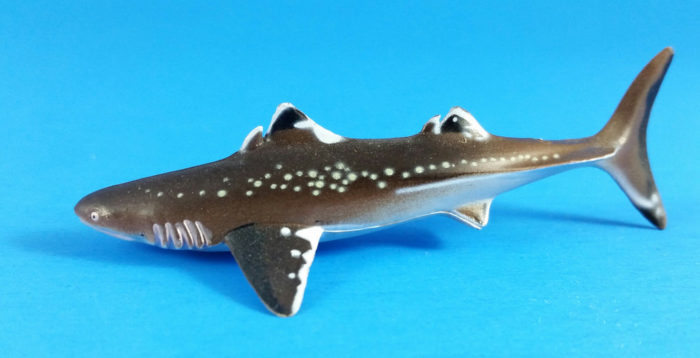
4.6 (18 votes)
Edited by Dinotoyblog, photos by Halichoeres
Ah, Cladoselache. The first shark! How exciting. Up for review today is the first rendition of the first shark, made by Kaiyodo.
Ah, Cladoselache. The first shark! How exciting. Up for review today is the first rendition of the first shark, made by Kaiyodo.
Cladoselache is believed to be a very agile and swift predator – this is very well represented in this replica.
Review: Dunkleosteus (Wild Safari by Safari Ltd)
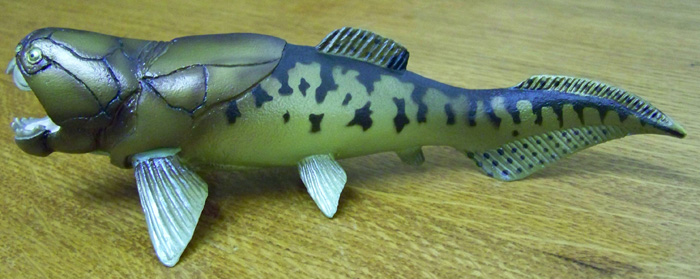
4.3 (29 votes)
Review by Tomhet, photographs by Dinotoyblog
As of late, Safari’s newcomers really have become something to look forward to, even more so if one of those newcomers is a late Devonian Placoderm (Placodermi are an exotic but fertile terrain only Kaiyodo, Prehistoric Panorama and Starlux had dared to explore) The Dunkleosteus is a fresh idea from Safari, and as such, it’s had a warm welcome among collectors.
As of late, Safari’s newcomers really have become something to look forward to, even more so if one of those newcomers is a late Devonian Placoderm (Placodermi are an exotic but fertile terrain only Kaiyodo, Prehistoric Panorama and Starlux had dared to explore) The Dunkleosteus is a fresh idea from Safari, and as such, it’s had a warm welcome among collectors.

